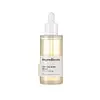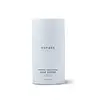What's inside
What's inside
 Key Ingredients
Key Ingredients

 Benefits
Benefits

 Concerns
Concerns

 Ingredients Side-by-side
Ingredients Side-by-side

Centella Asiatica Extract
CleansingPropanediol
SolventGlycerin
HumectantMethylpropanediol
Solvent1,2-Hexanediol
Skin ConditioningButylene Glycol
HumectantDiethoxyethyl Succinate
SolventWater
Skin ConditioningHydrolyzed Sclerotium Gum
HumectantC12-14 Alketh-12
EmulsifyingDipropylene Glycol
HumectantSodium Citrate
BufferingEthylhexylglycerin
Skin ConditioningCitric Acid
BufferingAzadirachta Indica Leaf Extract
Skin ConditioningJuniperus Virginiana Oil
MaskingTocopherol
AntioxidantPanthenol
Skin ConditioningMelia Azadirachta Flower Extract
Skin ConditioningCurcuma Longa Root Extract
MaskingFerula Galbaniflua Resin Oil
AntimicrobialPolyglyceryl-10 Myristate
Skin ConditioningBarosma Betulina Leaf Extract
PerfumingHydroxyacetophenone
AntioxidantPentylene Glycol
Skin ConditioningCaprylic/Capric Triglyceride
MaskingCaprylyl Glycol
EmollientHydrogenated Lecithin
EmulsifyingOlea Europaea Fruit Oil
MaskingSodium Hyaluronate
HumectantOcimum Sanctum Leaf Extract
Skin ConditioningCitrus Unshiu Peel Extract
MaskingSqualene
EmollientCetyl Ethylhexanoate
EmollientEthylhexyl Palmitate
EmollientButyrospermum Parkii Butter
Skin ConditioningCorallina Officinalis Extract
Skin ConditioningCeramide NP
Skin ConditioningCandida Bombicola/Glucose/Methyl Rapeseedate Ferment
AntimicrobialGlycolipids
Skin ConditioningMadecassoside
AntioxidantMadecassic Acid
Skin ConditioningAsiaticoside
AntioxidantAsiatic Acid
Skin ConditioningCentella Asiatica Extract, Propanediol, Glycerin, Methylpropanediol, 1,2-Hexanediol, Butylene Glycol, Diethoxyethyl Succinate, Water, Hydrolyzed Sclerotium Gum, C12-14 Alketh-12, Dipropylene Glycol, Sodium Citrate, Ethylhexylglycerin, Citric Acid, Azadirachta Indica Leaf Extract, Juniperus Virginiana Oil, Tocopherol, Panthenol, Melia Azadirachta Flower Extract, Curcuma Longa Root Extract, Ferula Galbaniflua Resin Oil, Polyglyceryl-10 Myristate, Barosma Betulina Leaf Extract, Hydroxyacetophenone, Pentylene Glycol, Caprylic/Capric Triglyceride, Caprylyl Glycol, Hydrogenated Lecithin, Olea Europaea Fruit Oil, Sodium Hyaluronate, Ocimum Sanctum Leaf Extract, Citrus Unshiu Peel Extract, Squalene, Cetyl Ethylhexanoate, Ethylhexyl Palmitate, Butyrospermum Parkii Butter, Corallina Officinalis Extract, Ceramide NP, Candida Bombicola/Glucose/Methyl Rapeseedate Ferment, Glycolipids, Madecassoside, Madecassic Acid, Asiaticoside, Asiatic Acid
Water
Skin ConditioningCaprylic/Capric Triglyceride
MaskingButyrospermum Parkii Butter
Skin ConditioningPropanediol
SolventSodium Acrylates Copolymer
Sea Silt Extract
Skin Conditioning1,2-Hexanediol
Skin ConditioningAdenosine
Skin ConditioningBellis Perennis Flower Extract
Skin ConditioningBetaine
HumectantBiosaccharide Gum-4
Skin ConditioningBisabolol
MaskingCaprylyl Glycol
EmollientCitric Acid
BufferingEthylhexylglycerin
Skin ConditioningGlycerin
HumectantHelianthus Annuus Seed Oil
EmollientHydrolyzed Hyaluronic Acid
HumectantHylocereus Undatus Fruit Extract
Skin ConditioningLecithin
EmollientLeucojum Aestivum Bulb Extract
Skin ProtectingMannan
Olivine Extract
Skin ConditioningPentylene Glycol
Skin ConditioningSodium Citrate
BufferingTocopherol
AntioxidantTremella Fuciformis Sporocarp Extract
AntioxidantTrifolium Pratense Flower Extract
AstringentZingiber Officinale Root Extract
MaskingBenzoic Acid
MaskingBenzyl Alcohol
PerfumingPhenoxyethanol
PreservativePotassium Sorbate
PreservativeSodium Benzoate
MaskingSodium Metabisulfite
AntioxidantWater, Caprylic/Capric Triglyceride, Butyrospermum Parkii Butter, Propanediol, Sodium Acrylates Copolymer, Sea Silt Extract, 1,2-Hexanediol, Adenosine, Bellis Perennis Flower Extract, Betaine, Biosaccharide Gum-4, Bisabolol, Caprylyl Glycol, Citric Acid, Ethylhexylglycerin, Glycerin, Helianthus Annuus Seed Oil, Hydrolyzed Hyaluronic Acid, Hylocereus Undatus Fruit Extract, Lecithin, Leucojum Aestivum Bulb Extract, Mannan, Olivine Extract, Pentylene Glycol, Sodium Citrate, Tocopherol, Tremella Fuciformis Sporocarp Extract, Trifolium Pratense Flower Extract, Zingiber Officinale Root Extract, Benzoic Acid, Benzyl Alcohol, Phenoxyethanol, Potassium Sorbate, Sodium Benzoate, Sodium Metabisulfite
 Reviews
Reviews

Ingredients Explained
These ingredients are found in both products.
Ingredients higher up in an ingredient list are typically present in a larger amount.
1,2-Hexanediol is a synthetic liquid and another multi-functional powerhouse.
It is a:
- Humectant, drawing moisture into the skin
- Emollient, helping to soften skin
- Solvent, dispersing and stabilizing formulas
- Preservative booster, enhancing the antimicrobial activity of other preservatives
This ingredient is also known as shea butter. It is an effective skin hydrator and emollient.
Emollients help soothe and soften your skin. It does this by creating a protective film on your skin. This barrier helps trap moisture and keeps your skin hydrated. Emollients may be effective at treating dry or itchy skin.
Shea butter is rich in antioxidants. Antioxidants help fight free-radicals, or molecules that may harm the body. It is also full of fatty acids including stearic acid and linoleic acid. These acids help replenish the skin and keep skin moisturized.
While Shea Butter has an SPF rating of about 3-4, it is not a sunscreen replacement.
Shea butter may not be fungal acne safe. We recommend speaking with a professional if you have any concerns.
Learn more about Butyrospermum Parkii ButterThis ingredient is an emollient, solvent, and texture enhancer. It is considered a skin-softener by helping the skin prevent moisture loss.
It helps thicken a product's formula and makes it easier to spread by dissolving clumping compounds.
Caprylic Triglyceride is made by combining glycerin with coconut oil, forming a clear liquid.
While there is an assumption Caprylic Triglyceride can clog pores due to it being derived from coconut oil, there is no research supporting this.
Learn more about Caprylic/Capric TriglycerideCaprylyl Glycol is a humectant and emollient, meaning it attracts and preserves moisture.
It is a common ingredient in many products, especially those designed to hydrate skin. The primary benefits are retaining moisture, skin softening, and promoting a healthy skin barrier.
Though Caprylyl Glycol is an alcohol derived from fatty acids, it is not the kind that can dry out skin.
This ingredient is also used as a preservative to extend the life of products. It has slight antimicrobial properties.
Learn more about Caprylyl GlycolCitric Acid is an alpha hydroxy acid (AHA) naturally found in citrus fruits like oranges, lemons, and limes.
Like other AHAs, citric acid can exfoliate skin by breaking down the bonds that hold dead skin cells together. This helps reveal smoother and brighter skin underneath.
However, this exfoliating effect only happens at high concentrations (20%) which can be hard to find in cosmetic products.
Due to this, citric acid is usually included in small amounts as a pH adjuster. This helps keep products slightly more acidic and compatible with skin's natural pH.
In skincare formulas, citric acid can:
While it can provide some skin benefits, research shows lactic acid and glycolic acid are generally more effective and less irritating exfoliants.
Most citric acid used in skincare today is made by fermenting sugars (usually from molasses). This synthetic version is identical to the natural citrus form but easier to stabilize and use in formulations.
Read more about some other popular AHA's here:
Learn more about Citric AcidEthylhexylglycerin (we can't pronounce this either) is commonly used as a preservative and skin softener. It is derived from glyceryl.
You might see Ethylhexylglycerin often paired with other preservatives such as phenoxyethanol. Ethylhexylglycerin has been found to increase the effectiveness of these other preservatives.
Glycerin is already naturally found in your skin. It helps moisturize and protect your skin.
A study from 2016 found glycerin to be more effective as a humectant than AHAs and hyaluronic acid.
As a humectant, it helps the skin stay hydrated by pulling moisture to your skin. The low molecular weight of glycerin allows it to pull moisture into the deeper layers of your skin.
Hydrated skin improves your skin barrier; Your skin barrier helps protect against irritants and bacteria.
Glycerin has also been found to have antimicrobial and antiviral properties. Due to these properties, glycerin is often used in wound and burn treatments.
In cosmetics, glycerin is usually derived from plants such as soybean or palm. However, it can also be sourced from animals, such as tallow or animal fat.
This ingredient is organic, colorless, odorless, and non-toxic.
Glycerin is the name for this ingredient in American English. British English uses Glycerol/Glycerine.
Learn more about GlycerinPentylene glycol is typically used within a product to thicken it. It also adds a smooth, soft, and moisturizing feel to the product. It is naturally found in plants such as sugar beets.
The hydrophilic trait of Pentylene Glycol makes it a humectant. As a humectant, Pentylene Glycol helps draw moisture from the air to your skin. This can help keep your skin hydrated.
This property also makes Pentylene Glycol a great texture enhancer. It can also help thicken or stabilize a product.
Pentylene Glycol also acts as a mild preservative and helps to keep a product microbe-free.
Some people may experience mild eye and skin irritation from Pentylene Glycol. We always recommend speaking with a professional about using this ingredient in your routine.
Pentylene Glycol has a low molecular weight and is part of the 1,2-glycol family.
Learn more about Pentylene GlycolPropanediol is an all-star ingredient. It softens, hydrates, and smooths the skin.
It’s often used to:
Propanediol is not likely to cause sensitivity and considered safe to use. It is derived from corn or petroleum with a clear color and no scent.
Learn more about PropanediolSodium Citrate is the sodium salts of citric acid. In skincare, it is used to alter pH levels and acts as a preservative.
Its main functions are to maintain the pH of a product and neutralize metal ions.
The acidity of our skin is maintained by our glands and skin biome; normal pH level of skin is slightly acidic (~4.75-5.5).
Being slightly acidic allows our skin to create an "acid mantle". This acid mantle is a thin barrier that protects our skin from bacteria and contaminants.
Learn more about Sodium CitrateTocopherol (also known as Vitamin E) is a common antioxidant used to help protect the skin from free-radicals and strengthen the skin barrier. It's also fat soluble - this means our skin is great at absorbing it.
Vitamin E also helps keep your natural skin lipids healthy. Your lipid skin barrier naturally consists of lipids, ceramides, and fatty acids. Vitamin E offers extra protection for your skin’s lipid barrier, keeping your skin healthy and nourished.
Another benefit is a bit of UV protection. Vitamin E helps reduce the damage caused by UVB rays. (It should not replace your sunscreen). Combining it with Vitamin C can decrease sunburned cells and hyperpigmentation after UV exposure.
You might have noticed Vitamin E + C often paired together. This is because it is great at stabilizing Vitamin C. Using the two together helps increase the effectiveness of both ingredients.
There are often claims that Vitamin E can reduce/prevent scarring, but these claims haven't been confirmed by scientific research.
Learn more about TocopherolWater. It's the most common cosmetic ingredient of all. You'll usually see it at the top of ingredient lists, meaning that it makes up the largest part of the product.
So why is it so popular? Water most often acts as a solvent - this means that it helps dissolve other ingredients into the formulation.
You'll also recognize water as that liquid we all need to stay alive. If you see this, drink a glass of water. Stay hydrated!
Learn more about Water